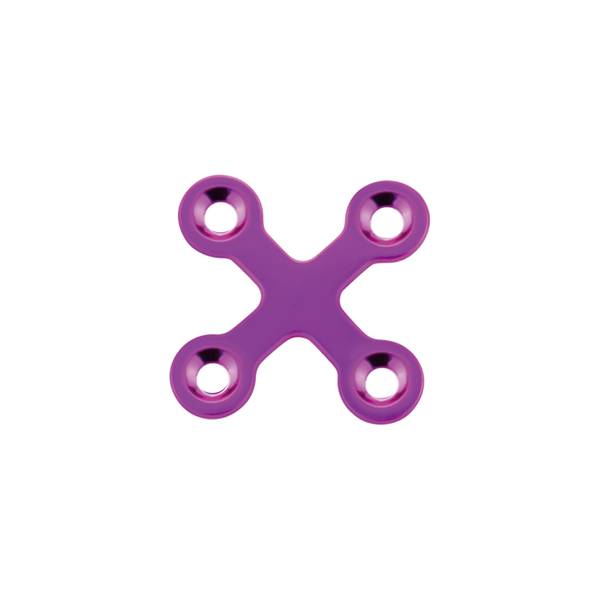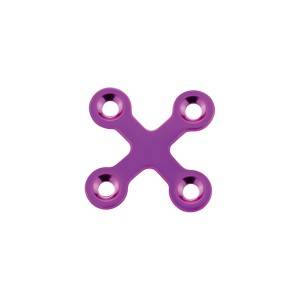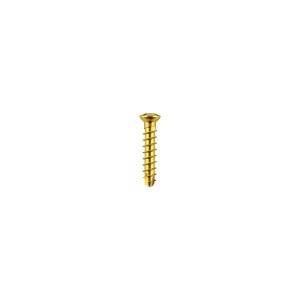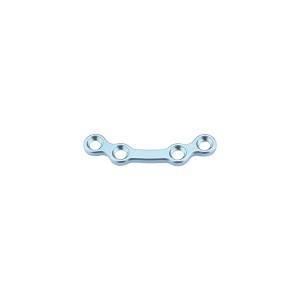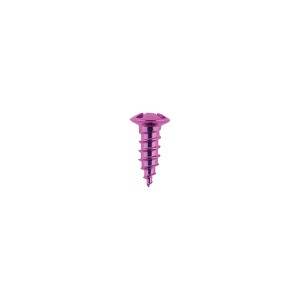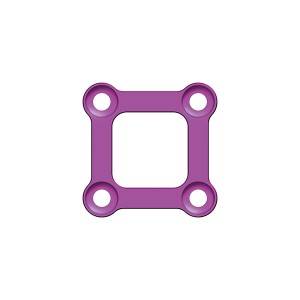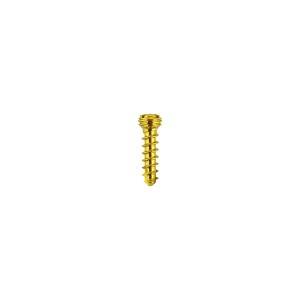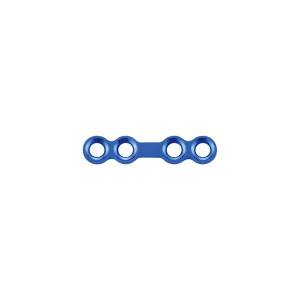Material: medical pure titanium
Thickness: 0.6mm
Product specification
|
Item No. |
Specification |
|
|
10.01.01.04021000 |
X plate 4 holes |
14mm |
Features & Benefits:
• bone plate adopt special customized German ZAPP pure titanium as raw material, with good biocompatibility and more uniform grain size distribution. Don't affect MRI/CT examination.
• bone plate surface adopt anodizing technology, can enhance surface hardness and abrasive resistance
Matching screw:
φ1.5mm self-drilling screw
φ1.5mm self-tapping screw
Matching instrument:
medical drill bit φ1.1*8.5*48mm
cross head screw driver: SW0.5*2.8*95mm
straight quick coupling handle
Oral and maxillofacial injuries are usually caused by work-related injuries, sports injuries, traffic accidents and accidental injuries in life. The blood circulation of the maxillofacial is rich, connected to the brain and neck, and it is the beginning of the respiratory tract and digestive tract.There are more maxillofacial bones and cavity sinuses. There are teeth attached to the maxillofacial bone, and the tongue is contained in the mouth.The face has facial muscles and facial nerves;The temporomandibular joint and the salivary glands;They perform the functions of expression, speech, chewing, swallowing and breathing.
The fixation of maxillofacial fracture after reduction is an important step in treatment.Commonly used fixation methods include single jaw arch splint fixation, interjaw fixation, interjaw ligation fixation, miniplate or microplate fixation, cranial and jaw fixation, and other methods include perimaxillary fixation and compression plate fixation.
1. The splint fixation method of single jaw dental arch: it is to use 2 mm diameter aluminum wire or finished product with hook dental arch splint, according to the shape of dental arch, and then use fine metal ligation wire through the tooth space, the splint is ligated on the part or all of the teeth on both sides of the fracture line, to fix the fracture segment.This method is suitable for fractures without obvious displacement, such as a linear midline fracture of the maxillochin and a localized alveolar fracture.
2. Intermaxillary fixation: the common method is to place a hooked dental arch splint on the upper and lower teeth, and then use a small rubber band for intermaxillary fixation, so that the jaw remains in the position of the normal occlusal relationship.This method is reliable, suitable for a variety of mandibular fractures, the advantage is that the jaw can be healed in a good position, is conducive to the recovery of function, the disadvantage is that the wounded can not open the mouth to eat, also not easy to maintain oral hygiene, should strengthen nursing.
3. Interosseous ligation and fixation: in the case of surgical open reduction, the two broken ends of the fracture can be drilled and then ligated and fixed through the stainless steel wire.This is also a reliable method of fixing.Jawbone fracture and toothless jaw fracture in children can also be fixed by this method.
4. Small plate or micro plate fixation: on the basis of manual open reduction, a small plate or micro plate of appropriate length and shape is placed across the bone surface of the two broken ends of the fracture, and a special screw is used to penetrate the bone cortex to fix the plate, so as to achieve the purpose of fixation of the fracture.Small plates are usually used for the mandible, while micro plates are used for the maxilla.
5. Cranial and maxillofacial fixation method: maxillary transverse fracture, can not only rely on the mandible for fixation, can use the skull for fixation, otherwise the middle face is prone to elongated deformation.The method of fixation is to first place the arch splint on the maxillary teeth, then tie one end of the arch splint on the posterior tooth area with stainless steel wire, and the other end of the arch splint through the oral cavity through the soft tissue of the zygomaticocheek, and hang on the support of the plaster cap.At the same time, intermaxillary fixation was added.
The time of jaw fracture fixation can be determined according to the patient's injury, age and general condition.It is generally 3~4 weeks for maxilla and 4~8 weeks for mandible.The dynamic and static method can be used to shorten the time of interjaw fixation.The method is that after 2 to 3 weeks of immobilization, the rubber ring is removed while feeding and proper movement is allowed.After the use of small plate or micro plate for strong internal fixation, functional training can be properly carried out in advance to promote fracture healing.
-
maxillofacial trauma 2.4 self tapping screw
-
locking maxillofacial mini arc bridge plate
-
φ1.5mm self-drilling screw
-
locking maxillofacial micro rectangular plate
-
maxillofacial trauma 2.4 locking screw
-
locking maxillofacial mini straight bridge plate
